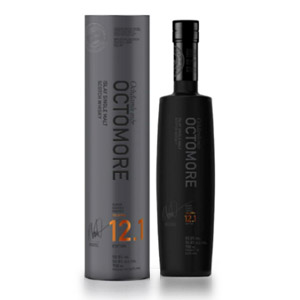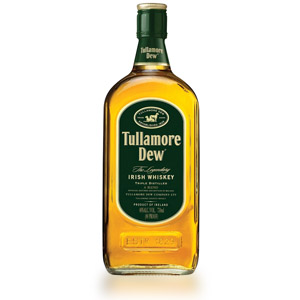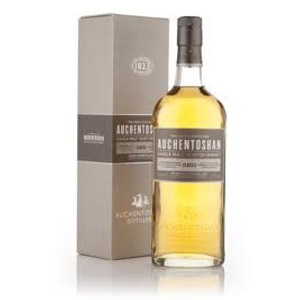Once again this year I was invited to take part in a marketing campaign for Bruichladdich’s Octomore, a highly-anticipated annual release of ultra-peated cask strength single malts. Last year’s Octomore 11 was quite an experience for your friendly neighborhood whisky blogger, and this year’s Octomore 12 campaign was no different. Click that link to see my writing published on the Bruichladdich website! Woo!
So before it comes up in the comments, I was paid to write the above content and participate in the social media campaign for the Octomore 12 release. I was not paid to review the individual whiskies nor to post my reviews here, although I did of course receive the review samples for free. That said, if your worldview is improved by viewing me as a paid shill for the industry (aside – I’m STILL waiting for my all-expenses-paid ‘influencer’ trip to Scotland. Hurry it up, people.) then by all means continue to do so.
Octomore, for those who haven’t had the pleasure of shelling out $150+ for a bottle of one of the past eleven editions, is the most heavily-peated whisky in the world. It’s bottled at cask strength and comes out every year in either 3 or 4 varieties. In brief, X.1 is 5 years old and is always aged only in ex-bourbon American oak. X.2 is usually only for the travel retail market but this year can be found in retail locations alongside its siblings. This is likely due to the relatively limited amount of international travel that’s going on right now. This year’s 12.2 was finished in first-fill French Sauternes casks for the final two years. X.3 is 5 years old and is always made exclusively from locally-grown Concerto barley from Islay’s Octomore farm. This year’s 12.3 is partially aged in real sherry casks. There is no 12.4 this year, but there will be a fifth edition of the Octomore 10 year-old, about which we do not have any details. All of these are super heavily peated, cask strength (or nearly), and are bottled without chill filtration or added coloring.
For the full backstory of Octomore, see last year’s series of posts.
12.1 this year was distilled in 2015 from the 2014 harvest of Scottish-grown (not on Islay) Concerto barley. The barley was malted by Bairds in Inverness to 130.8 ppm and the distillate was aged for 5 years in first-fill ex-bourbon American oak casks from a variety of bourbon distilleries. Although it is cask strength, Bruichladdich mixes in a “just a drop” of spring water from Octomore Farm’s natural spring, which does not significantly change its strength at 59.9% ABV.
The purpose of the X.1 release is always to set a baseline for Octomore for the year, which is why it is always matured only in ex-bourbon. It’s the classic Octomore, and showcases the spirit and the way that Bruichladdich’s unique stills affect the incredibly high phenol content of the wash.
Nose: Crisp, clean, grassy, seaweed-flecked peat. Assertive, but the nose tickle is moderate considering the high ABV. A second whiff shows toasted nori, white tea, jasmine, light vanilla and scattered caramel. After a rest in the glass, I can find grapefruit, birch beer, and a hint of smoked fish.
Palate: Medium-bodied. Strong tongue burn, which gives way to lemon-lime soda, barrel char, chewy oak, cantaloupe melon, and a very earthy, fungal style of peat with a heavy dose of sooty smoke.
Finish: Long, of course, and very warming. Heavy charcoal, but not especially bitter. The soot remains, but most of the citrus drops away. Residual tannins dry the mouth. Fades slowly, but without evolving.
With Water: Several drops of water add a chewy saltwater taffy note to the aroma, as well as a meatier nougat element. The palate seems livelier, and carries more of the high notes through. The finish also retains some of the citrus notes that were missing initially, but also brings a tinge of bitter herbs. Definitely try this with some water after first trying it neat.
Overall: This is unapologetically Octomore. The synergy between blindingly high levels of peat and blindingly high ABV creates a kind of alchemy in the mouth, a kind of high that isn’t achievable via any other type of spirit. While I preferred the heavier citrus notes of the previous version (11.1), this still delivers the same fix. The magic seems to be in how the peat, despite its intensity and density, turns complementary when splashed on a canvas of Bruichladdich malt.
If you can handle the high proof, the high level of peat, and the high price then you will not be disappointed.
(Note: I’ve marked all three Octomore bottles as “Must Try” this year, but really I just mean you’ll enjoy any of them if you can get your hands on them. No need to buy all three unless you’re independently wealthy or just that devoted to Bruichladdich!)
Up Next: Octomore 12.2


About The Distillery
An Islay distillery of another sort, Bruichladdich (“brook laddie”) or “The Laddie”, is now known for bucking the trend. In an era of more and more heavily-peated island whiskies, Bruichladdich produces a mildly-peated whisky with character derived more from oak and barley varieties than peat. Bruichladdich captured the hearts of craft whisky adherents with its rebellious approach to revitalizing the distillery after its 2001 reopening, producing numerous fancifully-named one-offs using maturing stock inherited from the previous owners, who mothballed it in 1994. It used these stocks to raise money each year until its ten year-old official bottling was ready. It also began marketing heavily-peated spirit under the name of nearby closed distillery Port Charlotte. Soon thereafter in 2012, however, it sold (or sold out?) to multinational spirits conglomerate Rémy Cointreau. The distillery’s process water rises through stone veined with iron, and runs over peat bogs. All Bruichladdich releases are of natural color and are not chill-filtered.







